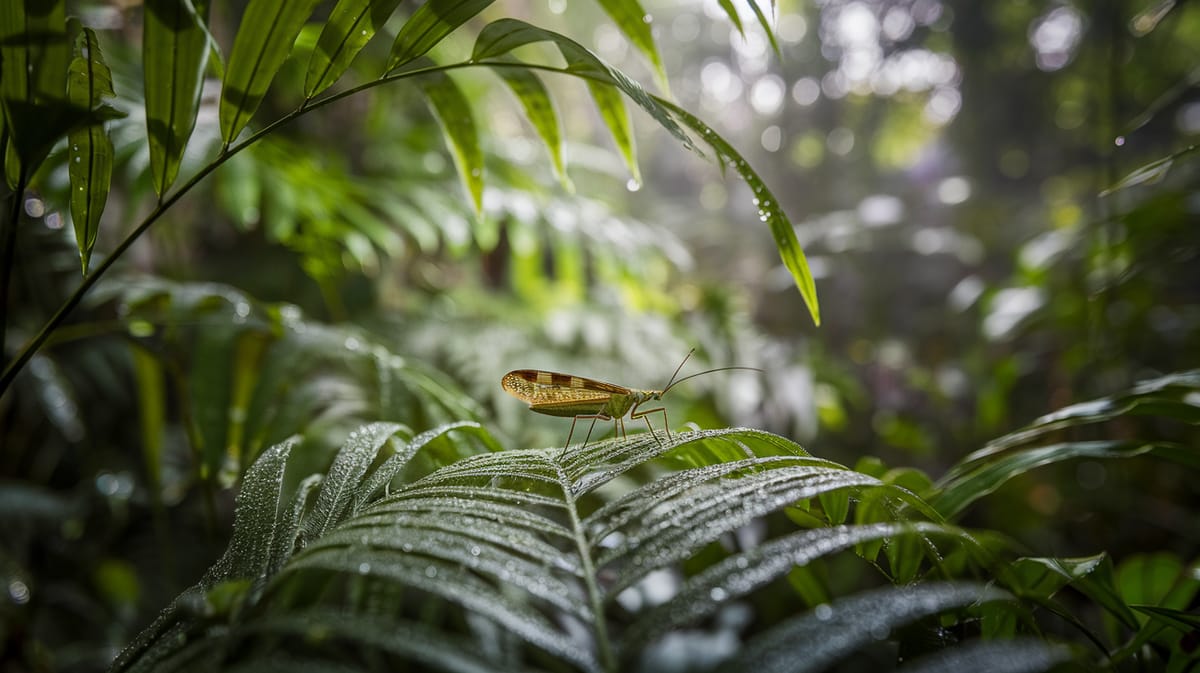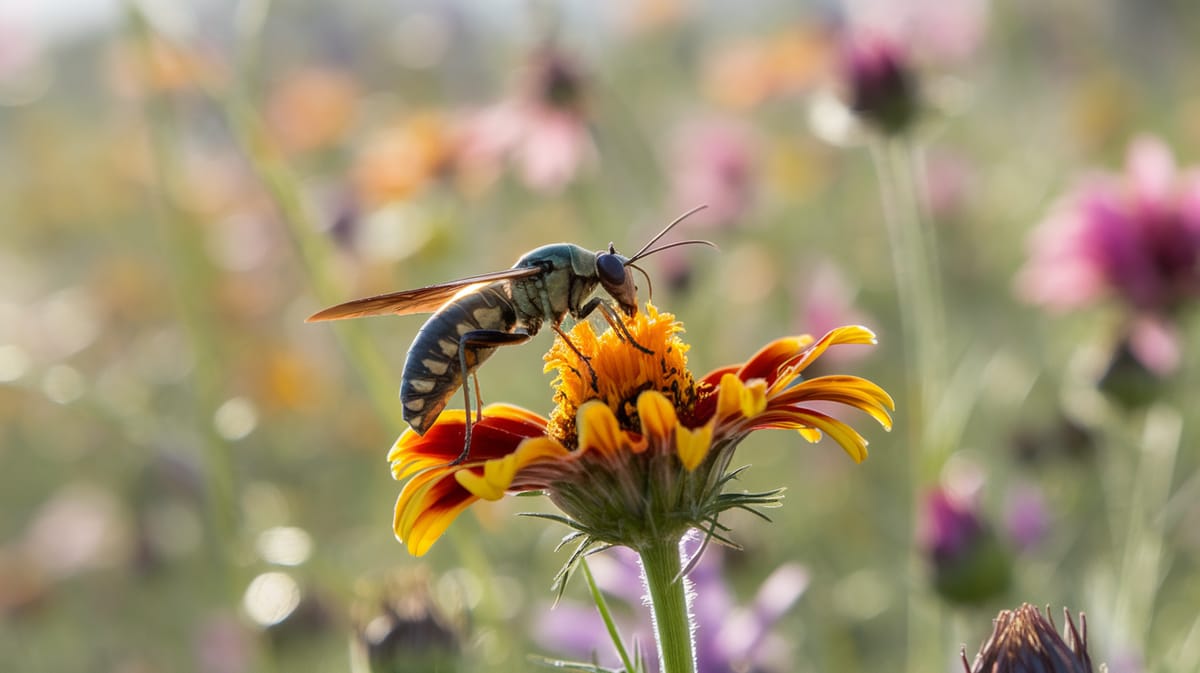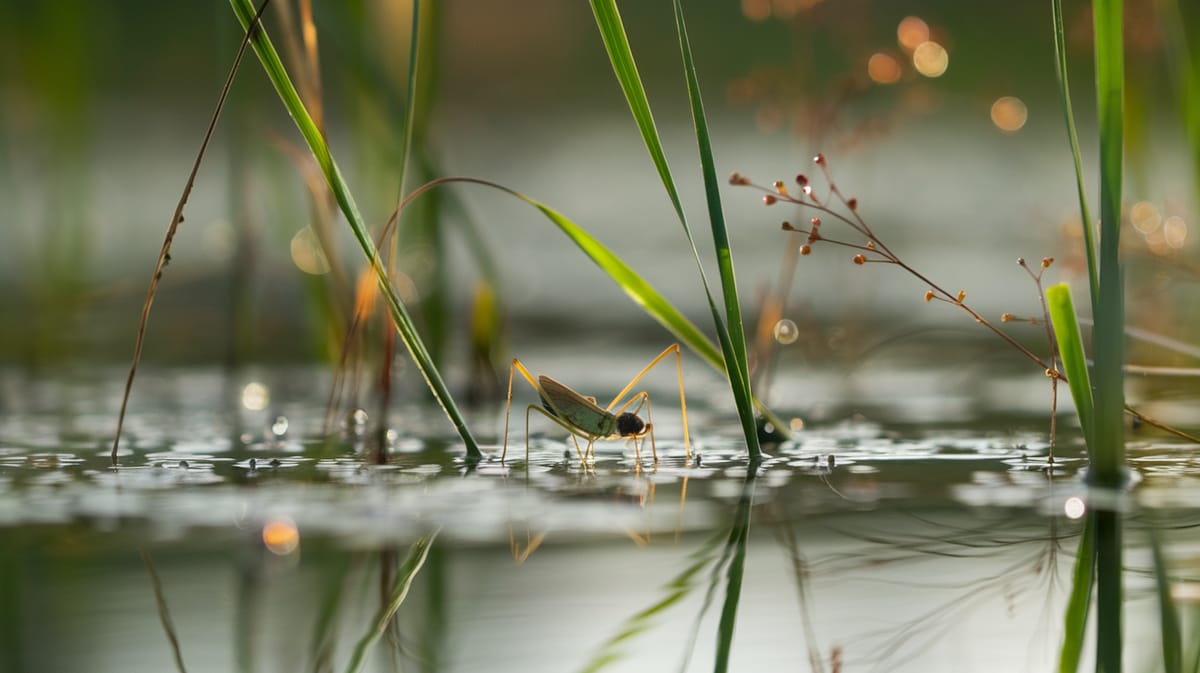Heteroptera
Shielded by its tough exoskeleton, the Heteroptera navigates diverse habitats with precision, playing a critical role in controlling pest populations. Its piercing-sucking mouthparts define its unique feeding strategy.

Key Insights at a Glance
Did You Know?
Taxonomy & Classification
Heteroptera, known for their piercing-sucking mouthparts and unique scent glands, exhibit fascinating adaptations that contribute to their predatory nature. Let's understand the evolutionary journey and classification of these remarkable predators.
Species Diversity
The Heteroptera suborder includes over 40,000 species, displaying a range of adaptations across terrestrial and aquatic environments.
Evolutionary Resilience
Originating over 300 million years ago, Heteroptera have survived major extinction events, showcasing their adaptability and evolutionary success.
Lifecycle and Growth
A remarkable journey of transformation from Egg to Adult.
Egg
Eggs are laid in clusters on plant surfaces, developing protective coatings that shield them from environmental threats.
Nymph
Nymphs resemble small adults and undergo several molts, gradually developing wings and other adult features.
Adult
Fully developed adults are equipped for reproduction and often exhibit complex mating behaviors and territoriality.
Dietary Habits
A versatile feeder with specialized adaptations, this insect thrives on plant sap, small invertebrates, and opportunistic prey.
| DIET TYPE | DESCRIPTION |
|---|---|
| Primary Diet | Primarily feeds on plant sap, using a piercing-sucking mouthpart to extract nutrients from stems and leaves. |
| Secondary Diet | Consumes small invertebrates like aphids and caterpillars, supplementing its diet with these protein-rich sources. |
| Occasional | Occasionally targets decaying plant matter or opportunistically preys on weakened insects during food scarcity. |

Behaviour and Adaptations
Discover the fascinating traits of Heteroptera, showcasing their unique adaptability in diverse environments.
Camouflage Mastery
Expertly blends into surroundings to evade predators and ambush prey.
Scent Defense
Emits pungent odors to deter threats and communicate with other bugs.
Aquatic Adaptation
Many species thrive in water, using specialized legs for swimming.
Ecosystem Impact
Heteroptera's role in ecosystem balance is vital through its diverse ecological contributions.
Natural Pest Control
Heteroptera species feed on pest insects, helping manage agricultural pests naturally.
Pollination Partners
Some Heteroptera assist in pollination, contributing to plant reproduction and biodiversity.
Nutrient Cyclers
Heteroptera aid in decomposing organic matter, recycling nutrients back into the soil.
Conservation Challenges
Understanding and addressing the major threats to Heteroptera populations.
Habitat Destruction
Urbanization and agriculture lead to significant loss of Heteroptera habitats.
Pesticide Exposure
Extensive pesticide use harms Heteroptera health and biodiversity.
Climate Variability
Changing climates disrupt Heteroptera life cycles and migration patterns.
Frequently Asked Questions
How long do Heteroptera live?
The lifespan of Heteroptera varies widely depending on the species and environmental conditions. Generally, they can live from a few months to over a year. Environmental factors such as temperature, food availability, and predation significantly influence their lifespan.
What do Heteroptera eat?
Heteroptera have diverse diets. Many are herbivores, feeding on plant sap, while others are predators, consuming small insects. Some species are omnivorous, eating both plant material and prey. Their feeding habits can be specific to their ecological niche.
Are Heteroptera poisonous?
Most Heteroptera are not poisonous to humans. However, some species can secrete chemicals that are irritating or cause allergic reactions. These defenses are typically used against predators rather than humans.
Are Heteroptera endangered?
The conservation status of Heteroptera varies by species. Some are abundant, while others face threats from habitat loss, pollution, or climate change. Specific assessments are required for individual species to determine their risk of endangerment.
What do Heteroptera symbolize?
In various cultures, Heteroptera can symbolize change, adaptability, or resilience due to their diverse habitats and survival strategies. Their ability to thrive in different environments often represents transformation and resourcefulness.
Do Heteroptera bite?
Some Heteroptera species can bite, especially those that are predatory or feed on blood. Their bites can cause discomfort but are generally not harmful to humans. Most species do not bite unless provoked or mishandled.
What color are Heteroptera?
Heteroptera come in a wide range of colors, from dull browns and greens for camouflage to bright reds and oranges for warning predators. Their coloration often reflects their habitat and lifestyle, aiding in protection or signaling.
Does a Heteroptera have wings?
Most Heteroptera possess wings, although their functionality varies. Many have two pairs, with the front pair being partly hardened. These wings aid in flight or act as protective covers, though some species may be flightless.
What does a Heteroptera look like?
Heteroptera are characterized by a distinct, elongated body shape with a flattened appearance. They have piercing-sucking mouthparts, and their forewings are typically hardened at the base. They vary significantly in size and color depending on the species.
Is a Heteroptera an insect?
Yes, Heteroptera are a suborder of insects within the order Hemiptera, commonly known as true bugs. They exhibit typical insect characteristics, including a three-part body structure, six legs, and an exoskeleton. They are distinguished by their unique mouthparts and wing structure.
Related Insects
Discover insects with similar characteristics to Heteroptera - including shared habitats, diets, and taxonomic classifications
Share this profile
Help others discover Heteroptera
